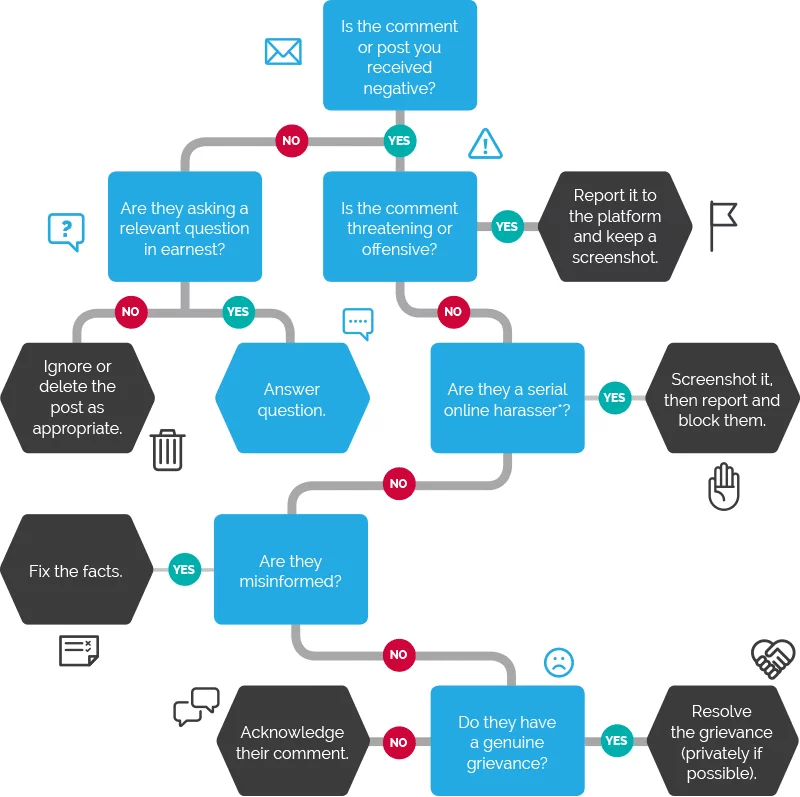A guide to dealing with online harassment for charities and social enterprises
Dealing with online harassment is a very delicate dance that’s part art part science, and if you get it right, the benefits might even outweigh the harassment in the first place.
There have been a few recent examples of organisations dealing with online harassment so successfully that they’ve ended up going viral. Earlier this year the fast food chain Wendy’s had an entertaining Twitter exchange with someone claiming they used frozen burgers.
Wendy’s sassy comebacks eventually led to the unnamed individual deleting not only the tweets in question, but also their entire Twitter account.
Another successful example from earlier this year is when Calais Action, a charity devoted to delivering essentials such as clothing to thousands of migrants in the French Port, started replying to comments involving criticism with a link to donate. They coined it ‘TrollAid’ and raised over £800, essentially profiting from online harassment.
Extent of harassment?
Although these examples highlight creative and effective ways to deal with online abuse, many charities and social enterprises are unsure of how to respond, and for these organisations we’ve created a guide.
According to a study carried out last year by the Data & Society Research Institute that surveyed 3,002 Americans, women are disproportionately affected by online harassment. 20% of young women aged 15-29 reported online stalking (compared with 8% of all internet users), and 41% of women aged 15-29 self-censored in order to avoid online abuse. LGBTQ Internet users are also more than twice as likely to experience online harassment than heterosexual Internet users.
Although there are no studies looking exclusively at the effects of online harassment on charities, in my experience from working closely with a wide variety of charities and non-profit organisations it’s clear that many deal with online harassment on a regular basis, and view it as a serious threat.
Free guide for charities
Social Misfits Media have teamed up with Hollaback! to put together a free guide for charities to use when dealing with online harassment.
Emily May, Co-founder and Executive Director of Hollaback! says: “Online harassment is on the rise globally, and organisations doing great work are increasingly targeted. We partnered with Social Misfits Media on this infographic to help teams distinguish between what is and isn’t online harassment, and figure out what to do when online harassment occurs.”
May adds: “Too often we see organisations eager to ignore online harassment, only to discover later that the harassment poses a security risk, or that it’s silencing staff from speaking out online. This guide is a first step to deciding what is or isn’t
online harassment, and then responding to it.”

The infographic includes a flowchart for dealing with harassment
The guide is to be used in the moment, when an organisation receives online abuse and is unsure of next steps, to help them deal quickly and efficiently with any negative comments and criticism. The flowchart will establish whether the comment is harassment, and then determine how it should be dealt with. For example if the comment is threatening, the flowchart advises taking a screenshot of it to keep on file incase of escalation, and then reporting it to the platform. However, if it’s an individual with a genuine grievance, or if someone is misinformed, the flowchart recommends resolving this, privately if possible, by citing them and fixing the facts. When dealing with any comments it’s always a good idea to be timely, keep a calm tone of voice, and consider substantiating any information by including a link to facts.
Advertisement
How one charity uses the guide
I spoke to Nick Harvey, Head of Communications for the medical charity, Doctors of the World, about using the guide to deal with online abuse. “We help refugees and migrants in the UK get the healthcare they are entitled to, which is a lightning rod for negative comments from some people,” says Harvey. “Having a simple flowchart that our staff and volunteers can use to check how they should respond, on a case by case basis, is a really useful tool.”
Organisations who are helping vulnerable people, such as Doctors of the World, need the internet. Social media helps these organisations reach those who need them most, and although we can’t stop online abuse, there is a way to deal with it that allows organisations to continue their great work whilst minimising harm to their mission, staff and beneficiaries.
Disseminating this guide to everyone who works for an organisation, including volunteers, will ensure there is a succinct and informed way of dealing with online abuse. In tandem with this, it’s also a good idea for organisations to think about long-term policies and procedures (see Hollaback’s online resources). By having wider policies and procedures in place to complement this guide, I hope that individuals and organisations can feel in control of, and not deterred by, any negativity they receive online.
Hannah Donald is Community Manager at Social Misfits Media.



